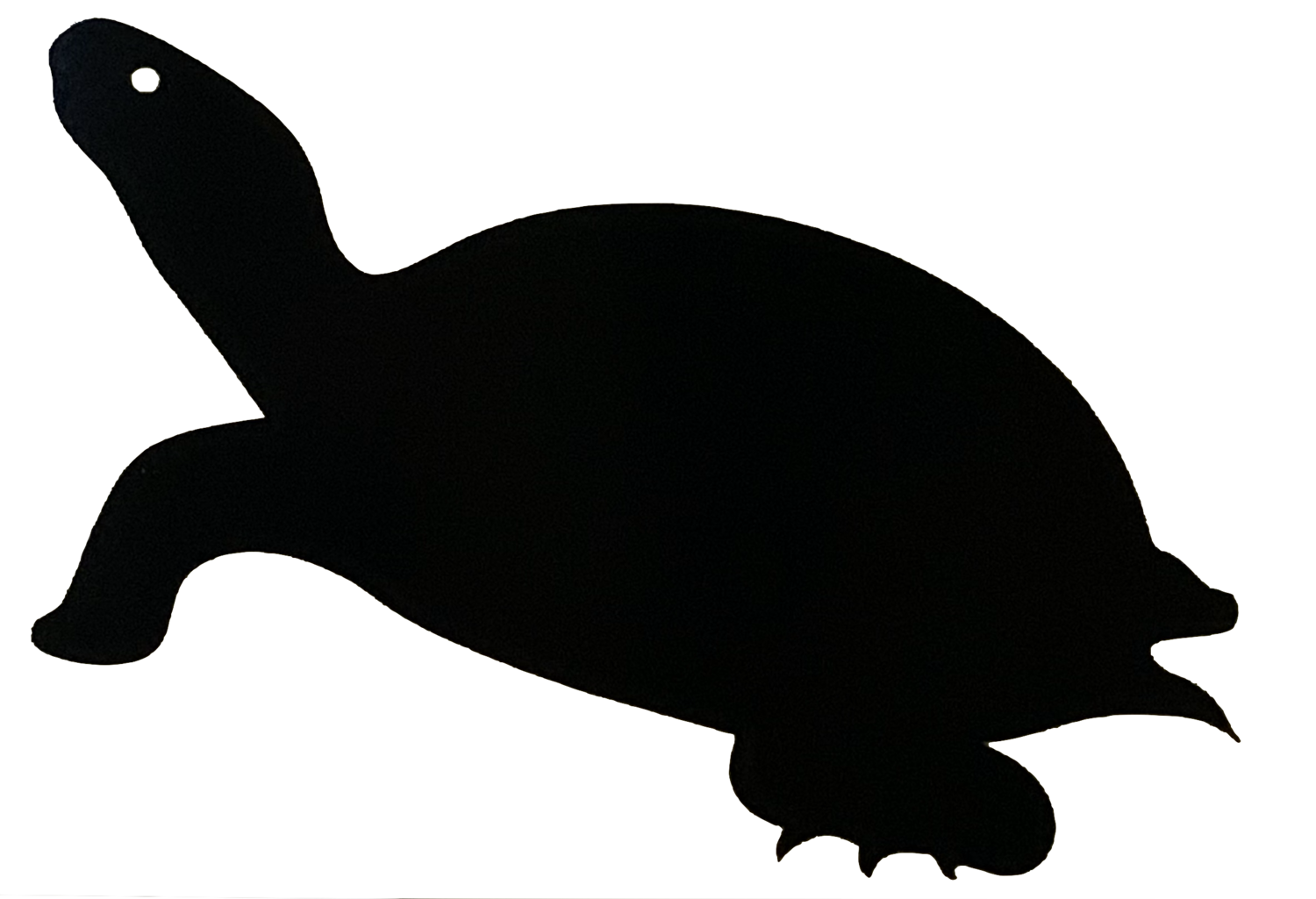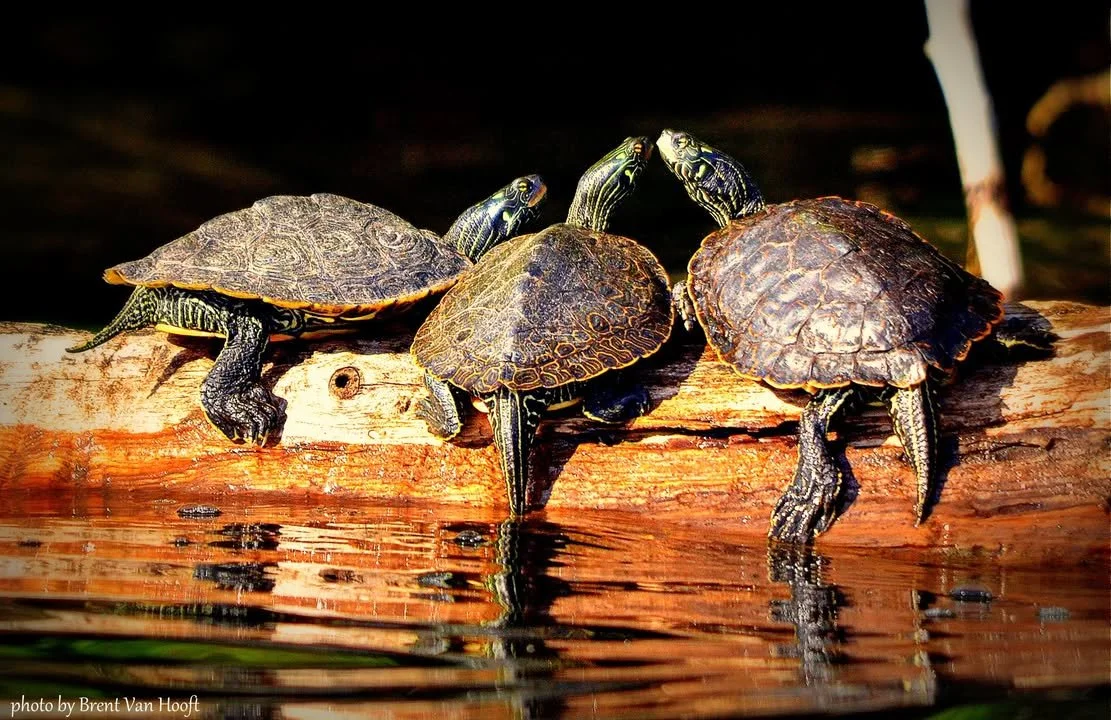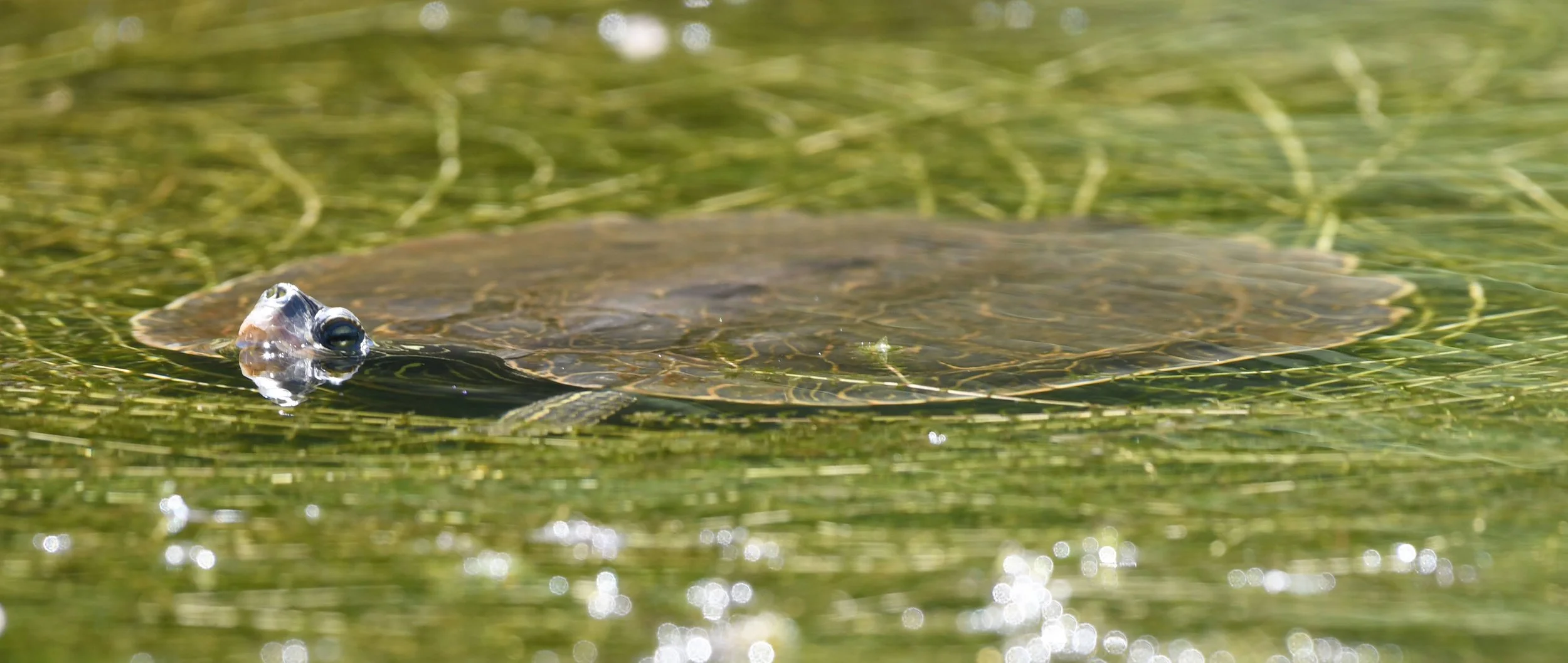Why do turtles bask? It’s more than to just stay warm
Thank you to Rebecca Brown for guest authoring this month’s blog post.
Three northern map turtles basking on a log. Photo taken by Brent Van Hooft
Think about all the times you have seen turtles in their natural habitat. What are they doing? Most of you may have pictured the turtles laying within the surface of the water or sitting still on a log in the sun. It is not a coincidence that many turtles spend their days basking. In fact, basking plays a crucial role in a turtle's health and survival.
Basking is a behavioural adaptation consisting of resting stationary within an atmospheric, aquatic or semiaquatic medium over a long-term period for beneficial purposes (Chessman, 2024). For many species of turtles, basking is necessary for thermoregulation, metabolism, vitamin D synthesis and prevention of infection.
Turtles are ectothermic organisms, also known as cold-blooded organisms, meaning they rely on their environment for heat and cannot produce it themselves (Smithsonian, 2018). When a turtle lays in the sun, it absorbs photons through their skin and shell and can convert this into thermal energy (Baines, 2011). When maintaining a good temperature range, a turtle’s metabolism can function most effectively leading to better growth, reproduction and overall health (Chessman, 2024). A healthy metabolism is essential for an organism to sustain life as it drives many physiological processes and provides energy for all organ systems.
Midland painted turtle basking
Sunlight, more specifically photons, is a key element of basking. The composition of photons is vast, with one of its components being ultraviolet (UV) rays (The University of Iowa, 2018). The type of UV responsible for sunburns on us humans, UVB, is also a crucial part of vitamin D synthesis. Vitamin D is necessary for both the adaptive and innate immune systems of turtles as well as bone health as it is essential for calcium homeostasis (Garefino & Milton, 2022). A study conducted on Green Sea Turtles (Chelonia mydas) tested how the amount of UVB absorbed impacted the turtles’ level of vitamin D, and consequently the health impacts of the results. To carry out this experiment researchers split the turtles into two tanks varying only in levels of sunlight. The control group experienced indirect or angled sunlight whereas the treatment group was exposed to direct sunlight. Results showed a direct link between UVB and vitamin D seeing as the turtles within the treatment group had a distinctly higher level of vitamin D evidenced through blood samples when compared to the control group (Garefino & Milton, 2022). Therefore this study suggests the higher the amount of direct light turtles are exposed to and absorbed, the higher the benefit and consequently the better prepared its immune system is for overall health and growth. In relation to basking, turtles benefit most by spending ample amounts of time in environments that contribute high levels of UVB, for example, sunny logs.
Northern map turtle aqua basking
Finally, as briefly introduced above, basking aids in the prevention of infection. In addition to vitamin D synthesis enhancing the immune system, atmospheric basking allows the turtles’ shell and skin to dry out. Having dry bodies can prevent organisms from attaching to the turtles. It also creates an uninhabitable environment for ectoparasites, such as leeches, meaning these harmful invaders are unable to attach (Munshower, 2018). Therefore, basking is not only beneficial for turtles, it also provides preventative measures.
Also, through atmospheric basking, some species of turtles (mainly aquatic turtles) undergo a type of dermal conditioning known as scute ecdysis or scute shedding (Chessman, 2024). Scutes are the tile-like scales making up the outer shell layer working to protect the inner shell (McLeod, 2021). Scute ecdysis refers to the shedding of a turtle’s scutes in order to expose a new layer of epithelium, similar to how a snake sheds its skin (Johnson et al., 2021). In essence, by basking out of water, scute ecdysis occurs allowing the turtle to grow as it ages.
In conclusion, basking is a necessary behaviour for more than just temperature regulation. It is a key driver in maintaining health from a young age up until adulthood and beyond. Without basking, a turtle would not get all the nutrients required to survive. Vitamin D levels would be lower, potentially nearing deficiency, metabolism would be less efficient, and ectoparasites/infections would be less uncommon. All of which would impact its organ systems, reproduction success and longevity. So next time you see a turtle seemingly lounging around, stop to think about all the benefits it is getting by relaxing in the sun. Maybe we need to take a page out of the turtles’ book and think about how basking could benefit our own lives.
References



